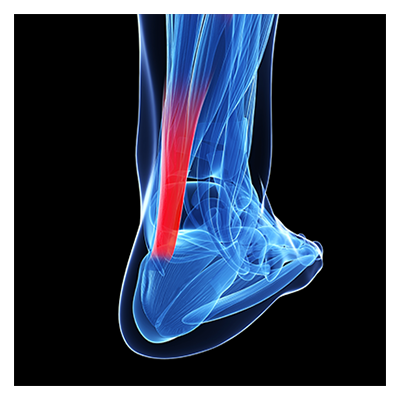Ask The Doc
What are the signs/symptoms of Achilles tendinitis and how is it treated?
The Achilles tendon is a long and broad tendon connecting the calf muscles (the gastrocnemius and soleus) to the heel bone (calcaneus). The Achilles is necessary for plantarflexion (flexing the foot down), allowing for a powerful push off when running and jumping. Every step requires the calf muscles to fire through the Achilles, and therefore, tendinitis is very common because of this constant use.
Achilles tendinitis is simply inflammation in this region (calf muscle to heel bone) resulting in pain. The pain can be directly over the heel bone from rubbing in the area, at the attachment of the tendon to the calcaneus (heel bone), or at the junction of the muscle and tendon. Pain is usually worse with activity and improves with rest. Tendinitis is often related to overuse, increased activity or stress on the Achilles, or an imbalance of strength between the muscles behind and in front of the ankle. Tight calf muscles (usually the gastrocnemius) decrease the ability of the Achilles to relax, creating more tension and stress on the tendon fibers.
Treating Achilles Tendinitis usually does not involve surgery. Activity modification with decreasing running and jumping, aggressive stretching of the calf muscles (gastrocnemius and soleus), and anti-inflammatories are the first line of treatment. A heel lift can also decrease stress on the Achilles. A walking boot or night splint to hold the foot at 90 degrees can be helpful. Physical therapy for eccentric strengthening and ankle stabilization is often recommended. Avoid steroid injections in this region as they can cause Achilles ruptures. There is some evidence that patients may benefit from platelet-rich plasma injections. If all these conservative measures do not provide relief, there are surgical options available.


